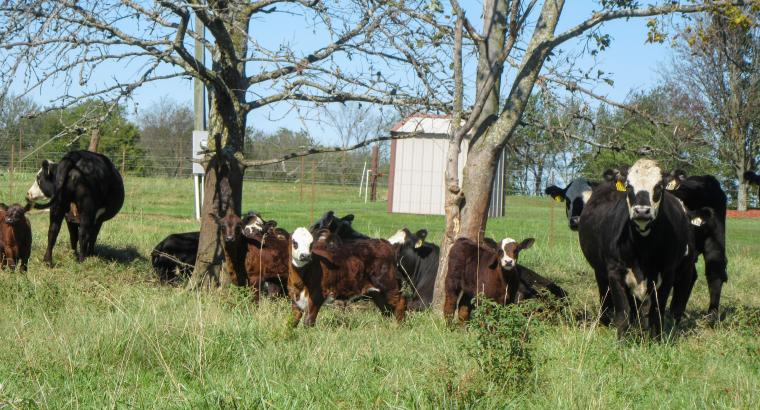STOCKTON, Mo. – “When planning for a successful calving season, plan for everything that might happen with the goal of the cow giving birth with little difficulty to a healthy calf,” says Patrick Davis, University of Missouri Extension livestock field specialist. Furthermore, manage cows to provide adequate quality and quantity of nourishment to the calf and rebred during the next breeding season. As spring calving approaches, Davis discusses operation and cattle management for a successful calving season.
“Cows should calve in approximately a body condition score (BCS) of 6, which is a smooth appearance of condition throughout,” says Davis. If cows are calving in a BCS of 6, that will allow them adequate condition, so if they lose one BCS from calving to breeding, the cows will still be in a BCS 5, which is adequate for optimum pregnancy rates.
“Cow BCS of 5 or greater will insure proper fetal development, the calf having a strong immune system to fight off sickness and other causes of early mortality,” he says. Furthermore, these cows have colostrum with higher immunoglobulins, which gives the calf a greater level of health protection.
“Cow’s colostrum will pass her health and vaccination status along to the calf,” says Davis. Therefore, cows in proper health and up to date on vaccination status will pass along the best immunity possible, which helps the calf to get off to a healthy start. Consult a veterinarian to develop a cow vaccination schedule to fit your cattle operation.
“Make sure equipment and facilities are in good working order prior to the calving season,” he says. The calving area should be clean, dry, strong, safe and functioning correctly prior to the calving season. Locate all supplies and place them where they can be accessed at any time. Davis suggests development of an obstetrical kit that includes obstetrical sleeves, disinfectant, lubricant, obstetrical chains and obstetrical handles. The kit should be mobile so it can be used in the barn and other places on the farm where cows need assistance during calving. Consult a veterinarian when developing an obstetrical kit and to answer questions related to calving season equipment and facilities.
“Develop a plan for when the cow is calving,” says Davis. This plan should include what to do, when to do it, how to do it, who to call if there is trouble and you need help, and how to know when there is trouble and you need help. This plan should be posted throughout the barn along with phone numbers of people to call if you need help. People working with the cattle should be educated and have a full understanding of the plan prior to the calving season. Consult a veterinarian to answer questions related to developing a calving plan.
“Once the calf is born, make sure that it is healthy, active and nurses to get the full amount of colostrum,” says Davis. Calves may be born during very cold temperatures, which increases the potential for calf frostbite or freezing to death. Have a warming area or warming box to keep the calf from freezing to death and reduce the chance of frostbite. Also, Davis suggests providing calves that have experienced cold or other stresses during birth extra colostrum or electrolytes to improve their health status.
“Once the calf is born, monitor health status,” says Davis. During the first day after birth, the calf should be identified either through tag, tattoo or both, and bull calves should be castrated as needed. If sickness is identified, work with your veterinarian for recommended action against the sickness.
For more information, contact Davis or your local MU Extension livestock field specialist.
